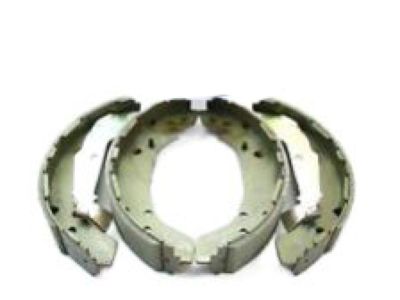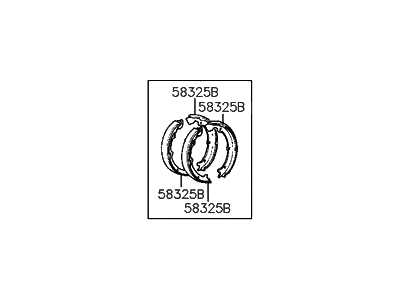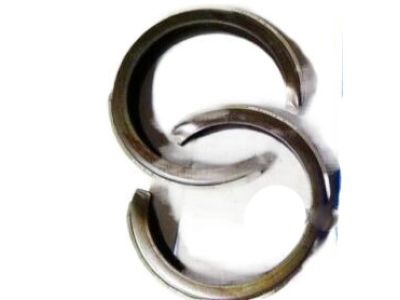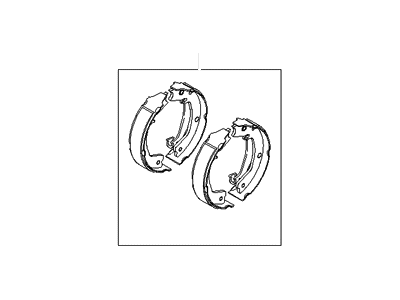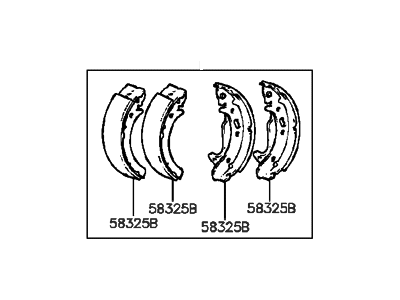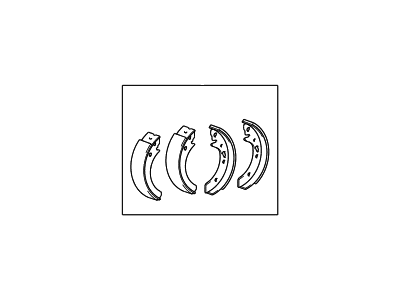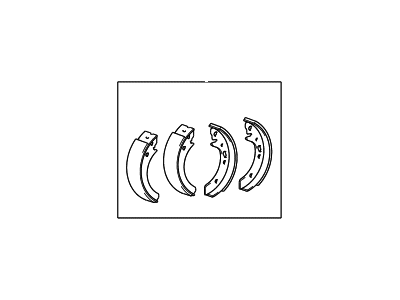×
- Hello
- Login or Register
- Quick Links
- Live Chat
- Track Order
- Parts Availability
- RMA
- Help Center
- Contact Us
- Shop for
- Hyundai Parts
- Hyundai Accessories


My Garage
My Account
Cart
Genuine Hyundai Sonata Parking Brake Shoe
Emergency Parking Brake Shoe- Select Vehicle by Model
- Select Vehicle by VIN
Select Vehicle by Model
orMake
Model
Year
Select Vehicle by VIN
For the most accurate results, select vehicle by your VIN (Vehicle Identification Number).
14 Parking Brake Shoes found

Hyundai Sonata Shoe & Lining Kit-Rear Brake
Part Number: 58305-3QA01$71.23 MSRP: $100.08You Save: $28.85 (29%)Ships in 1-3 Business Days
Hyundai Sonata Shoe & Lining Kit-Rear Brake
Part Number: 58205-33A00$31.89 MSRP: $44.41You Save: $12.52 (29%)Ships in 1-3 Business Days
Hyundai Sonata Shoe & Lining Kit-Rear Parking Brake
Part Number: 58305-3SA30$62.72 MSRP: $88.12You Save: $25.40 (29%)Ships in 1-3 Business Days
Hyundai Sonata Shoe & Lining Kit-Rear Parking Brake
Part Number: 58305-3KA00$52.70 MSRP: $73.40You Save: $20.70 (29%)Ships in 1-3 Business DaysHyundai Sonata Shoe & Lining Kit-Rear Brake
Part Number: 58305-3QA00$69.81 MSRP: $98.07You Save: $28.26 (29%)Ships in 1-3 Business DaysHyundai Sonata Shoe & Lining Kit-Rear Brake
Part Number: 58305-33D00$50.30 MSRP: $70.06You Save: $19.76 (29%)Ships in 1-3 Business DaysHyundai Sonata Shoe & Lining Kit-Rear Brake
Part Number: 58305-33B00$38.49 MSRP: $53.61You Save: $15.12 (29%)Ships in 1-3 Business DaysHyundai Sonata Shoe Kit-Parking Brake
Part Number: 58350-38A10$52.79 MSRP: $73.53You Save: $20.74 (29%)Ships in 1-3 Business DaysHyundai Sonata Shoe & Lining Kit-Rear Brake
Part Number: 58305-34A00$50.30 MSRP: $70.06You Save: $19.76 (29%)Ships in 1-3 Business DaysHyundai Sonata Shoe & Lining Kit-Rear Brake
Part Number: 58305-34A10$50.30 MSRP: $70.06You Save: $19.76 (29%)Ships in 1-3 Business DaysHyundai Sonata Shoe Kit-Parking Brake
Part Number: 58350-38A20$52.79 MSRP: $73.53You Save: $20.74 (29%)Ships in 1-3 Business DaysHyundai Sonata Shoe Kit-Parking Brake
Part Number: 58350-38A30$52.79 MSRP: $73.53You Save: $20.74 (29%)Ships in 1-3 Business DaysHyundai Sonata Shoe & Lining Kit-Rear Brake
Part Number: 58305-31020$50.30 MSRP: $70.06You Save: $19.76 (29%)Ships in 1-3 Business DaysHyundai Sonata Shoe & Lining Kit-Rear Brake
Part Number: 58305-38A00$51.01 MSRP: $71.05You Save: $20.04 (29%)Ships in 1-3 Business Days
Hyundai Sonata Parking Brake Shoe
If you are looking for affordable high-quality OEM Hyundai Sonata Parking Brake Shoe, then you have come to the prime place. Our website provides a large amount of genuine Hyundai Sonata Parking Brake Shoe at unbeatable prices. All our parts come backed with the manufacturer's warranty.
Hyundai Sonata Parking Brake Shoe Parts Questions & Experts Answers
- Q: How to replace the Parking Brake Shoe on Hyundai Sonata?A:This procedure applies only to vehicles equipped with rear disc brakes, while drum brake-equipped vehicles use the main drum Brake Shoes as parking brake shoes. Begin by removing the rear Brake Discs. Inspect the thickness of the lining material on the shoes; if it has worn down to 1/32-inch or less, replace the shoes. Next, remove the hub and bearing assembly, noting that shoe replacement can be performed without removing this assembly, although space will be limited. Clean the brake parts with brake system cleaner. Follow the illustrations for the brake shoe replacement process, which includes removing the lower return spring, lifting out the star-wheel adjuster mechanism while noting its orientation, removing the upper return spring, and releasing the front hold-down spring to lift off the front shoe. Remove the rear shoe assembly similarly, clean the backing plate, and lightly lubricate the contact surfaces with high-temperature grease. Fit the new rear shoe to the backing plate, install the hold-down retainer, and repeat the process for the front shoe. Install the upper return spring, clean and lubricate the adjuster, and install it in its original orientation. Then, install the lower return spring and rotate the adjuster for proper clearance before installing the brake disc. Remove the hole plugs from the brake discs and adjust the parking brake shoe clearance by turning the adjuster star wheel until the shoes contact the discs, ensuring no drag when the disc is turned. Install the Brake Caliper, tightening the bolts to the specified torque, followed by installing the wheel and tightening the lug nuts. Finally, set the parking brake with about 45 pounds of force and count the number of clicks; it should be about five clicks, and if not, adjust the parking brake accordingly.
Related Hyundai Sonata Parts
Browse by Year
2019 Parking Brake Shoe 2018 Parking Brake Shoe 2017 Parking Brake Shoe 2016 Parking Brake Shoe 2015 Parking Brake Shoe 2014 Parking Brake Shoe 2013 Parking Brake Shoe 2012 Parking Brake Shoe 2011 Parking Brake Shoe 2010 Parking Brake Shoe 2009 Parking Brake Shoe 2008 Parking Brake Shoe 2007 Parking Brake Shoe 2006 Parking Brake Shoe 2005 Parking Brake Shoe 2004 Parking Brake Shoe 2003 Parking Brake Shoe 2002 Parking Brake Shoe 2001 Parking Brake Shoe 2000 Parking Brake Shoe 1999 Parking Brake Shoe 1998 Parking Brake Shoe 1997 Parking Brake Shoe 1996 Parking Brake Shoe 1995 Parking Brake Shoe 1994 Parking Brake Shoe 1993 Parking Brake Shoe 1992 Parking Brake Shoe 1991 Parking Brake Shoe 1990 Parking Brake Shoe 1989 Parking Brake Shoe 1988 Parking Brake Shoe
